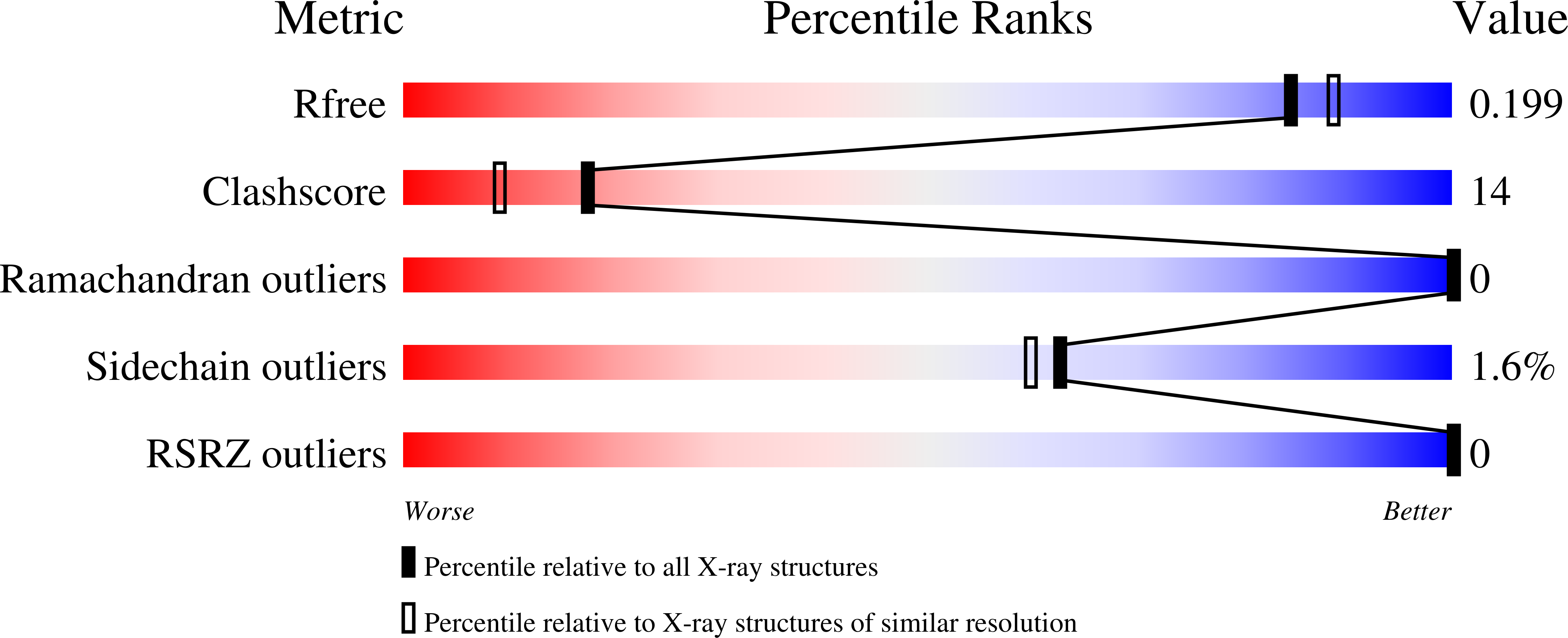Structures of diverse poxin cGAMP nucleases reveal a widespread role for cGAS-STING evasion in host-pathogen conflict.
Eaglesham, J.B., McCarty, K.L., Kranzusch, P.J.(2020) Elife 9
- PubMed: 33191912
- DOI: https://doi.org/10.7554/eLife.59753
- Primary Citation of Related Structures:
6XB3, 6XB4, 6XB5, 6XB6 - PubMed Abstract:
DNA viruses in the family Poxviridae encode poxin enzymes that degrade the immune second messenger 2'3'-cGAMP to inhibit cGAS-STING immunity in mammalian cells. The closest homologs of poxin exist in the genomes of insect viruses suggesting a key mechanism of cGAS-STING evasion may have evolved outside of mammalian biology. Here we use a biochemical and structural approach to discover a broad family of 369 poxins encoded in diverse viral and animal genomes and define a prominent role for 2'3'-cGAMP cleavage in metazoan host-pathogen conflict. Structures of insect poxins reveal unexpected homology to flavivirus proteases and enable identification of functional self-cleaving poxins in RNA-virus polyproteins. Our data suggest widespread 2'3'-cGAMP signaling in insect antiviral immunity and explain how a family of cGAS-STING evasion enzymes evolved from viral proteases through gain of secondary nuclease activity. Poxin acquisition by poxviruses demonstrates the importance of environmental connections in shaping evolution of mammalian pathogens.
Organizational Affiliation:
Department of Microbiology, Harvard Medical School, Boston, United States.















